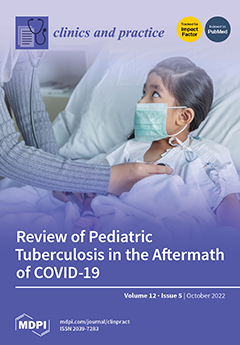Open AccessEditor’s ChoiceReview
PD-L1 Over-Expression Varies in Different Subtypes of Lung Cancer: Will This Affect Future Therapies?
by
Asad Ullah, Steven Pulliam, Nabin Raj Karki, Jaffar Khan, Sana Jogezai, Sandresh Sultan, Lal Muhammad, Marjan Khan, Nimra Jamil, Abdul Waheed, Sami Belakhlef, Intisar Ghleilib, Eric Vail, Saleh Heneidi and Nagla Abdel Karim
Cited by 7 | Viewed by 3822
Abstract
Programmed death-ligand (PD-L) 1 and 2 are ligands of programmed cell death 1 (PD-1) receptor. They are members of the B7/CD28 ligand-receptor family and the most investigated inhibitory immune checkpoints at present. PD-L1 is the main effector in PD-1-reliant immunosuppression, as the PD-1/PD-L
[...] Read more.
Programmed death-ligand (PD-L) 1 and 2 are ligands of programmed cell death 1 (PD-1) receptor. They are members of the B7/CD28 ligand-receptor family and the most investigated inhibitory immune checkpoints at present. PD-L1 is the main effector in PD-1-reliant immunosuppression, as the PD-1/PD-L pathway is a key regulator for T-cell activation. Activation of T-cells warrants the upregulation of PD-1 and production of cytokines which also upregulate PD-L1 expression, creating a positive feedback mechanism that has an important role in the prevention of tissue destruction and development of autoimmunity. In the context of inadequate immune response, the prolonged antigen stimulation leads to chronic PD-1 upregulation and T-cell exhaustion. In lung cancer patients, PD-L1 expression levels have been of special interest since patients with non-small cell lung cancer (NSCLC) demonstrate higher levels of expression and tend to respond more favorably to the evolving PD-1 and PD-L1 inhibitors. The Food and Drug Administration (FDA) has approved the PD-1 inhibitor, pembrolizumab, alone as front-line single-agent therapy instead of chemotherapy in patients with NSCLC and PD-L1 ≥1% expression and chemoimmunotherapy regimens are available for lower stage disease. The National Comprehensive Cancer Network (NCCN) guidelines also delineate treatment by low and high expression of PD-L1 in NSCLC. Thus, studying PD-L1 overexpression levels in the different histological subtypes of lung cancer can affect our approach to treating these patients. There is an evolving role of immunotherapy in the other sub-types of lung cancer, especially small cell lung cancer (SCLC). In addition, within the NSCLC category, squamous cell carcinomas and non-G12C KRAS mutant NSCLC have no specific targetable therapies to date. Therefore, assessment of the PD-L1 expression level among these subtypes of lung cancer is required, since lung cancer is one of the few malignances wherein PD-L1 expression levels is so crucial in determining the role of immunotherapy. In this study, we compared PD-L1 expression in lung cancer according to the histological subtype of the tumor.
Full article
►▼
Show Figures






